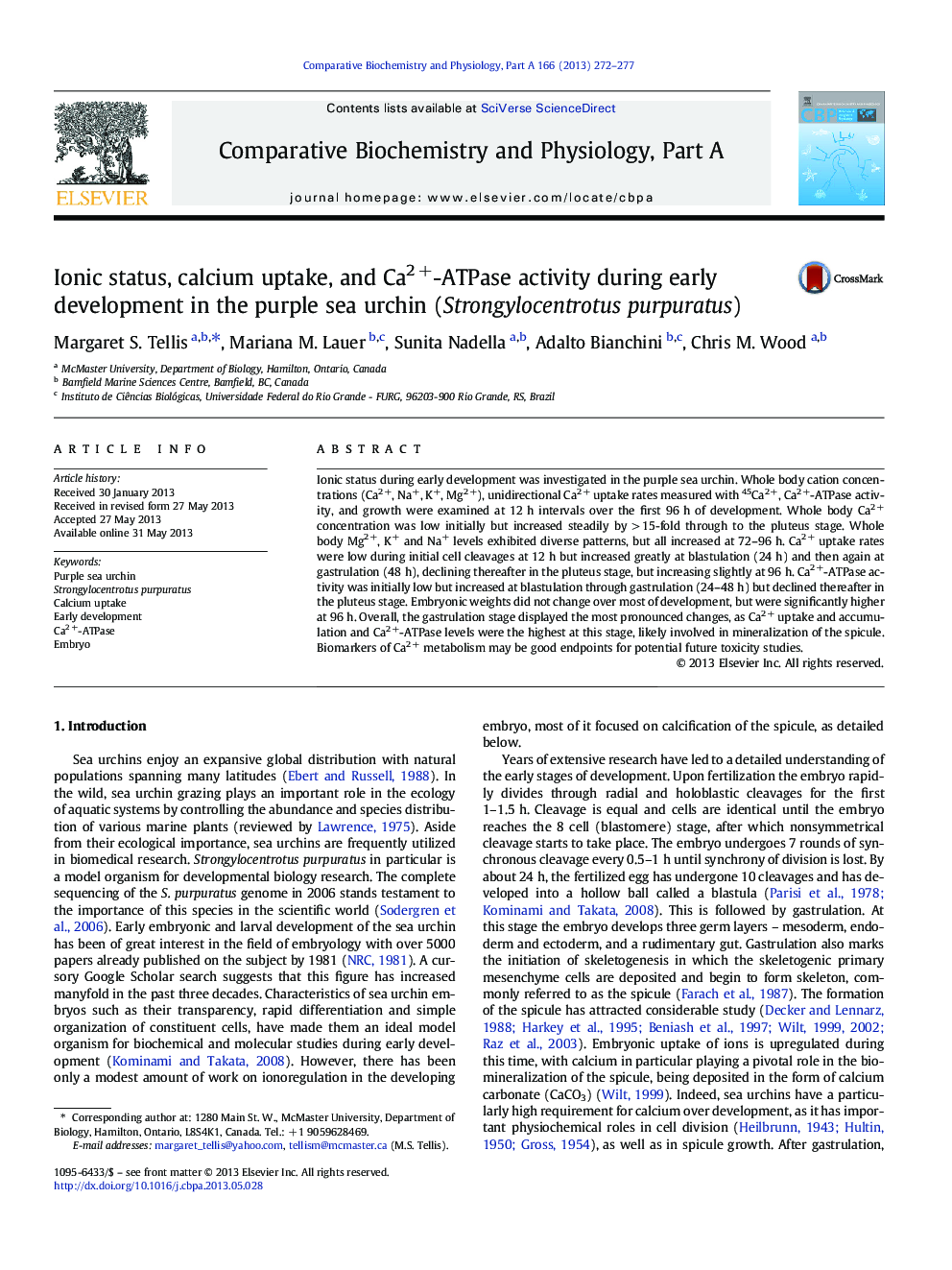| Article ID | Journal | Published Year | Pages | File Type |
|---|---|---|---|---|
| 10818812 | Comparative Biochemistry and Physiology Part A: Molecular & Integrative Physiology | 2013 | 6 Pages |
Abstract
Ionic status during early development was investigated in the purple sea urchin. Whole body cation concentrations (Ca2Â +, Na+, K+, Mg2Â +), unidirectional Ca2Â + uptake rates measured with 45Ca2Â +, Ca2Â +-ATPase activity, and growth were examined at 12Â h intervals over the first 96Â h of development. Whole body Ca2Â + concentration was low initially but increased steadily by >Â 15-fold through to the pluteus stage. Whole body Mg2Â +, K+ and Na+ levels exhibited diverse patterns, but all increased at 72-96Â h. Ca2Â + uptake rates were low during initial cell cleavages at 12Â h but increased greatly at blastulation (24Â h) and then again at gastrulation (48Â h), declining thereafter in the pluteus stage, but increasing slightly at 96Â h. Ca2Â +-ATPase activity was initially low but increased at blastulation through gastrulation (24-48Â h) but declined thereafter in the pluteus stage. Embryonic weights did not change over most of development, but were significantly higher at 96Â h. Overall, the gastrulation stage displayed the most pronounced changes, as Ca2Â + uptake and accumulation and Ca2Â +-ATPase levels were the highest at this stage, likely involved in mineralization of the spicule. Biomarkers of Ca2Â + metabolism may be good endpoints for potential future toxicity studies.
Related Topics
Life Sciences
Biochemistry, Genetics and Molecular Biology
Biochemistry
Authors
Margaret S. Tellis, Mariana M. Lauer, Sunita Nadella, Adalto Bianchini, Chris M. Wood,
